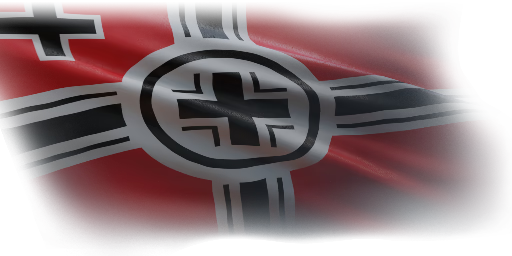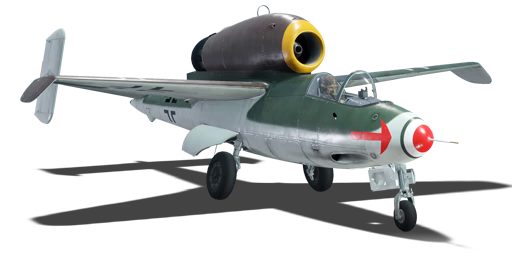

Aviation
He 162 A-1
V
Rank
AB
6.3
RB
6.0
SB
6.7
Battle rating
Germany
Research country
Fighter
Main role
General information
Flight performance
Max speed
at 6,000 m
840774876800 km/h
Rate of Climb
23.41828.219.1 m/s
Turn time
3032.328.831.3 s
Max altitude
12,000 m
Takeoff Run
750 m
Landing
flaps
flaps
Take-off
flaps
flaps
Combat
flaps
flaps
Air
brake
brake
General characteristics
Crew
1 person
Engine
Length
9.1 m
Wingspan
7.2 m
Wing Loading
212 kg/m²
Weight:
Base weight
1.992.051.942.04 t
Fuel in main tanks
0.48 t (26m)
Limits:
Max Speed Limit (IAS)
1,040 km/h
Mach Number Limit
0.9 M
G limit
≈ -7/11 G
Flap Speed Limit (IAS)
L / T / C
500 / 649 / 678 km/h
Gear Speed Limit (IAS)
350 km/h
Offensive armament
2 × 30 mm MK 108 cannon
Ammunition
100 rounds
Fire rate
600 shots/min
One-second Burst Mass
3.3 kg
| Belt | Belt filling | Armor penetration (mm) at a distance: | |||||
|---|---|---|---|---|---|---|---|
| 10 m | 100 m | 500 m | 1000 m | 1500 m | 2000 m | ||
| HEI-T/I | 6 | 6 | 6 | 6 | 6 | 6 | |
| HEI-T/HEI-T/HEI-T/HEF-I | 4 | 4 | 4 | 4 | 4 | 4 | |
| HEI-T/HEI-T/HEI-T | 4 | 4 | 4 | 4 | 4 | 4 | |
| HEI | 4 | 4 | 4 | 4 | 4 | 4 | |
Economy
Repair cost
Basic → Reference
AB
3,897 → 4,938 

RB
8,602 → 10,899 

SB
14,011 → 17,752 

Crew training
78,000 

Experts
270,000 

Aces
1,500 

Research Aces
670,000 

Reward multiplier
AB / RB / SB
130 / 250 / 600 % 

190 % 

Total cost of modifications
80,100 

130,000 

Talisman cost
2,000 

Flight performance | |
|---|---|
Survivability |
|---|
Weaponry |
|---|
Rating by players
You must play more than 3 battles for the last week and more than 10 battles in a vehicle to rate it.
Like:
25
Flight performance:
Not enough ratings
Survivability:
Not enough ratings
Aerial combat:
Not enough ratings
Ground attack:
Not enough ratings
Balance:
Not enough ratings
Tips & Tricks
This space is currently empty
Do you know any interesting vehicle features?
Loading...
No articles about this vehicle yet
Become the first author and get rewards!
Write a guide, tell about interesting historical facts, make a tutorial or simply an interesting post.
No more content